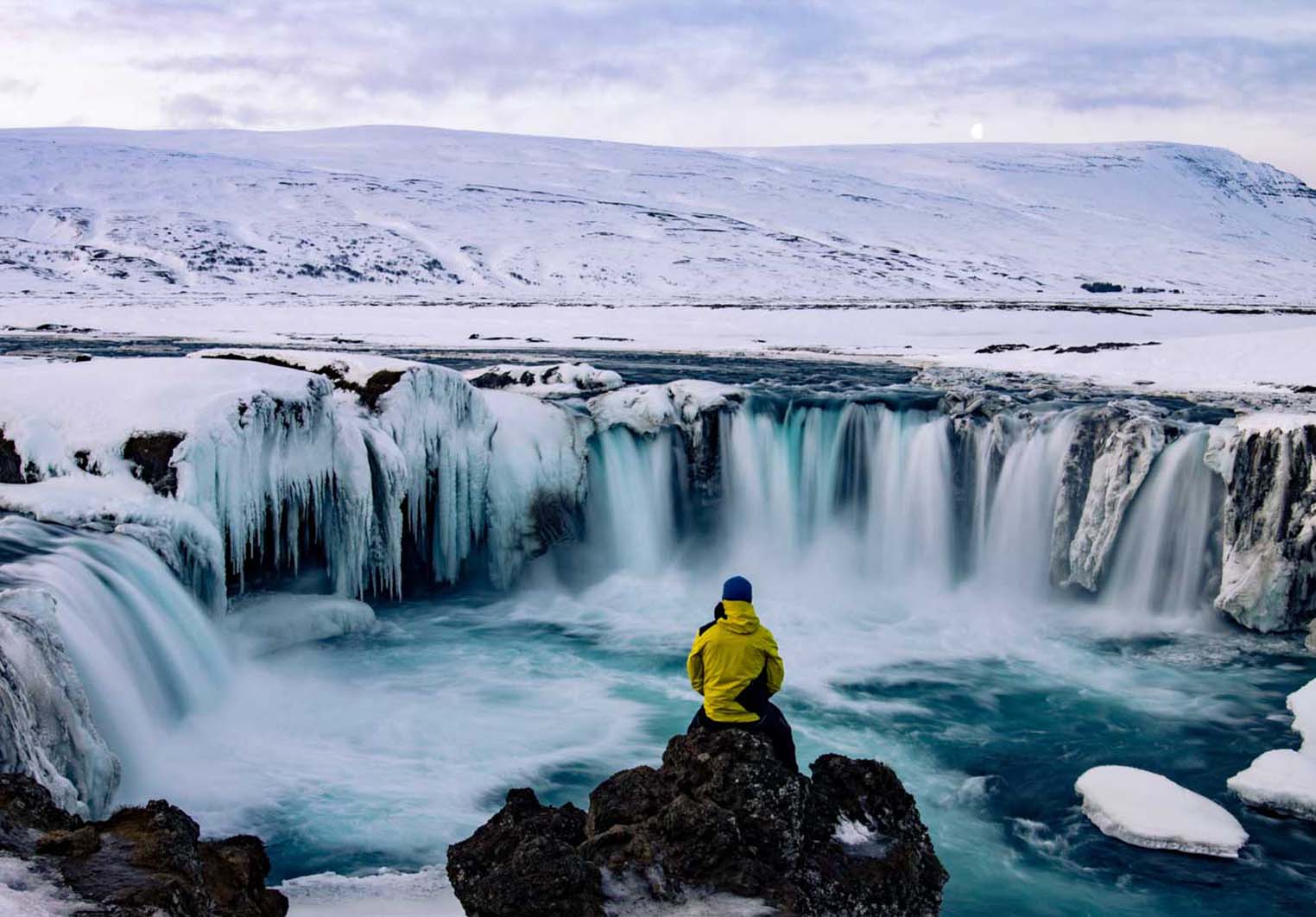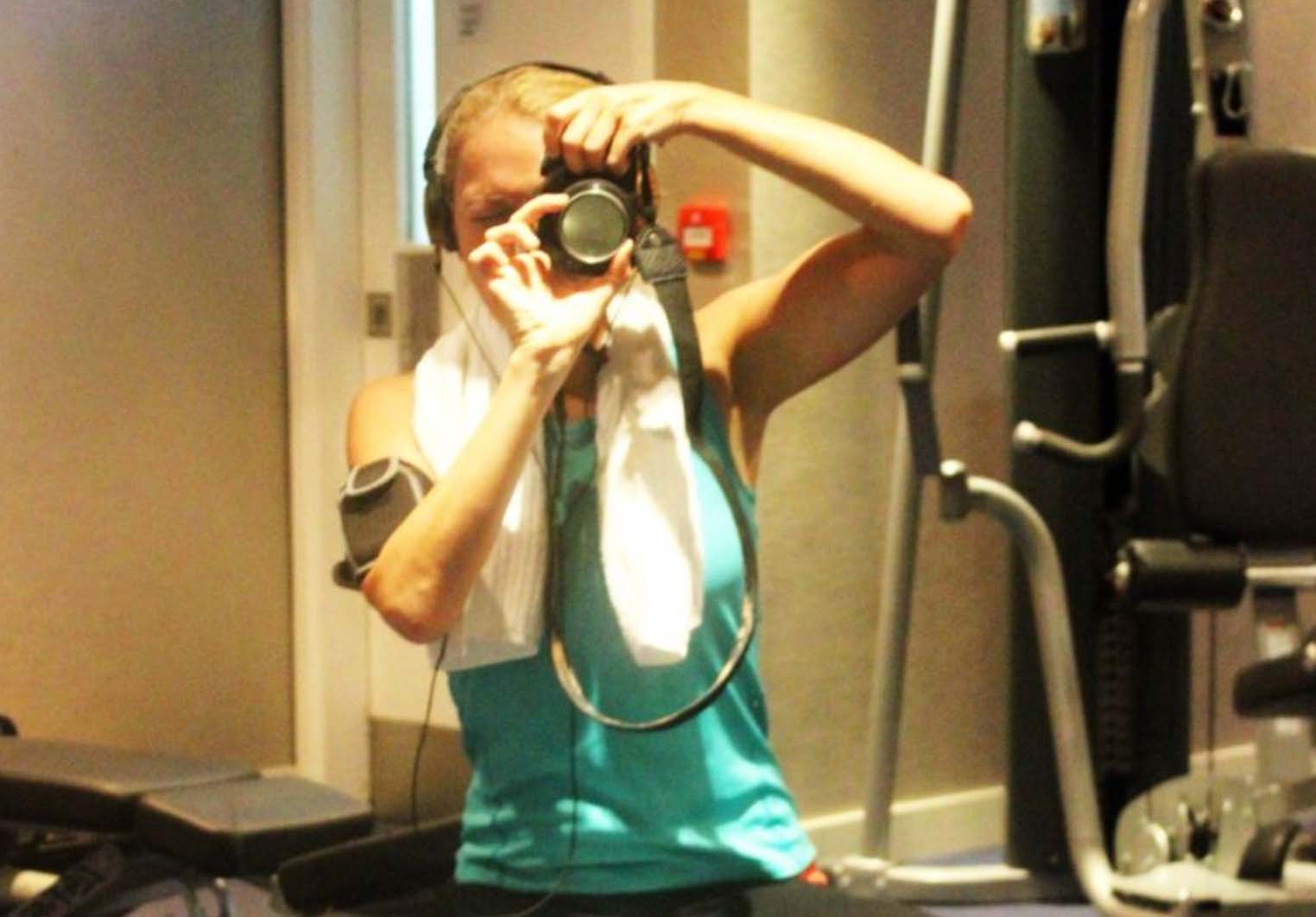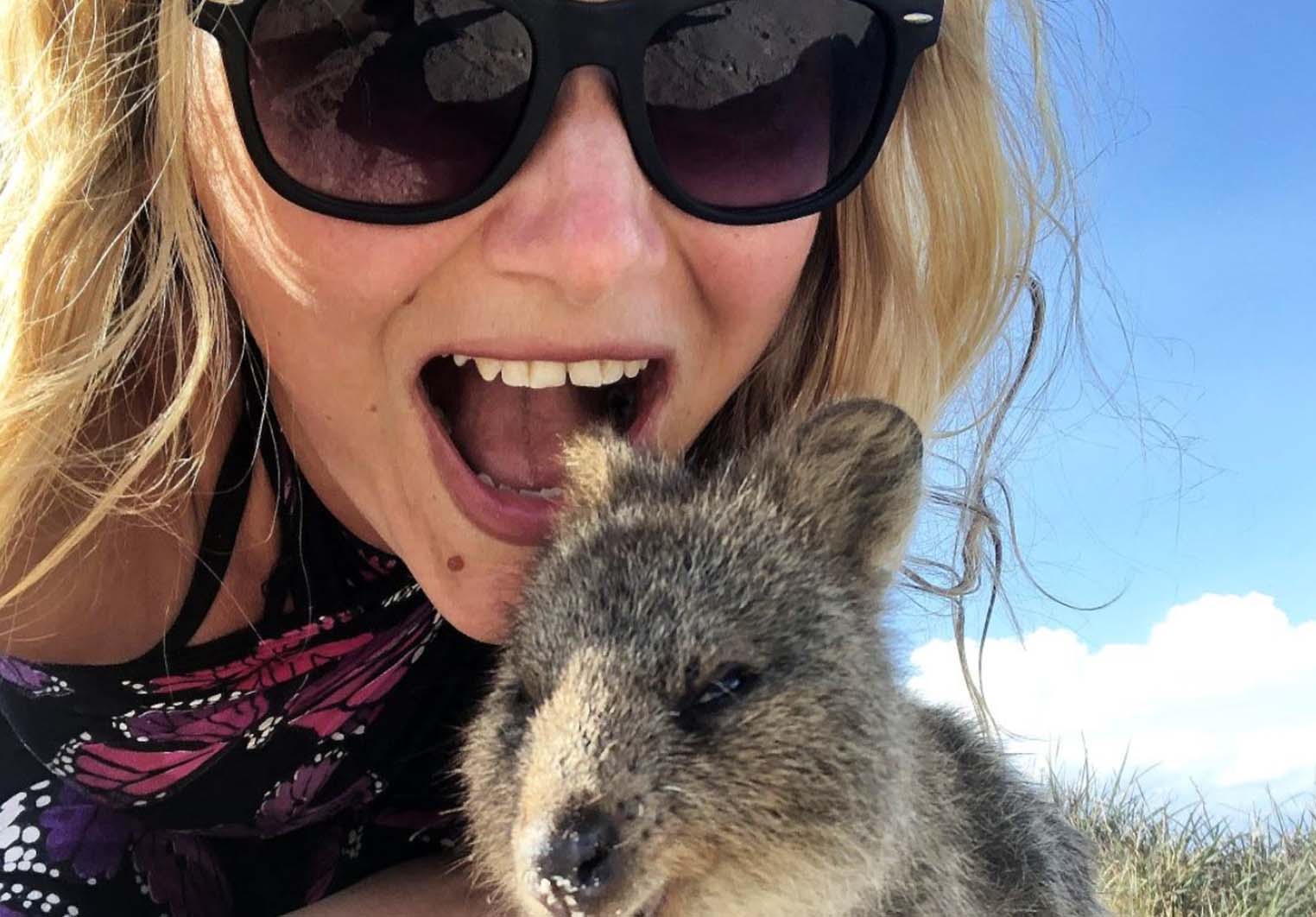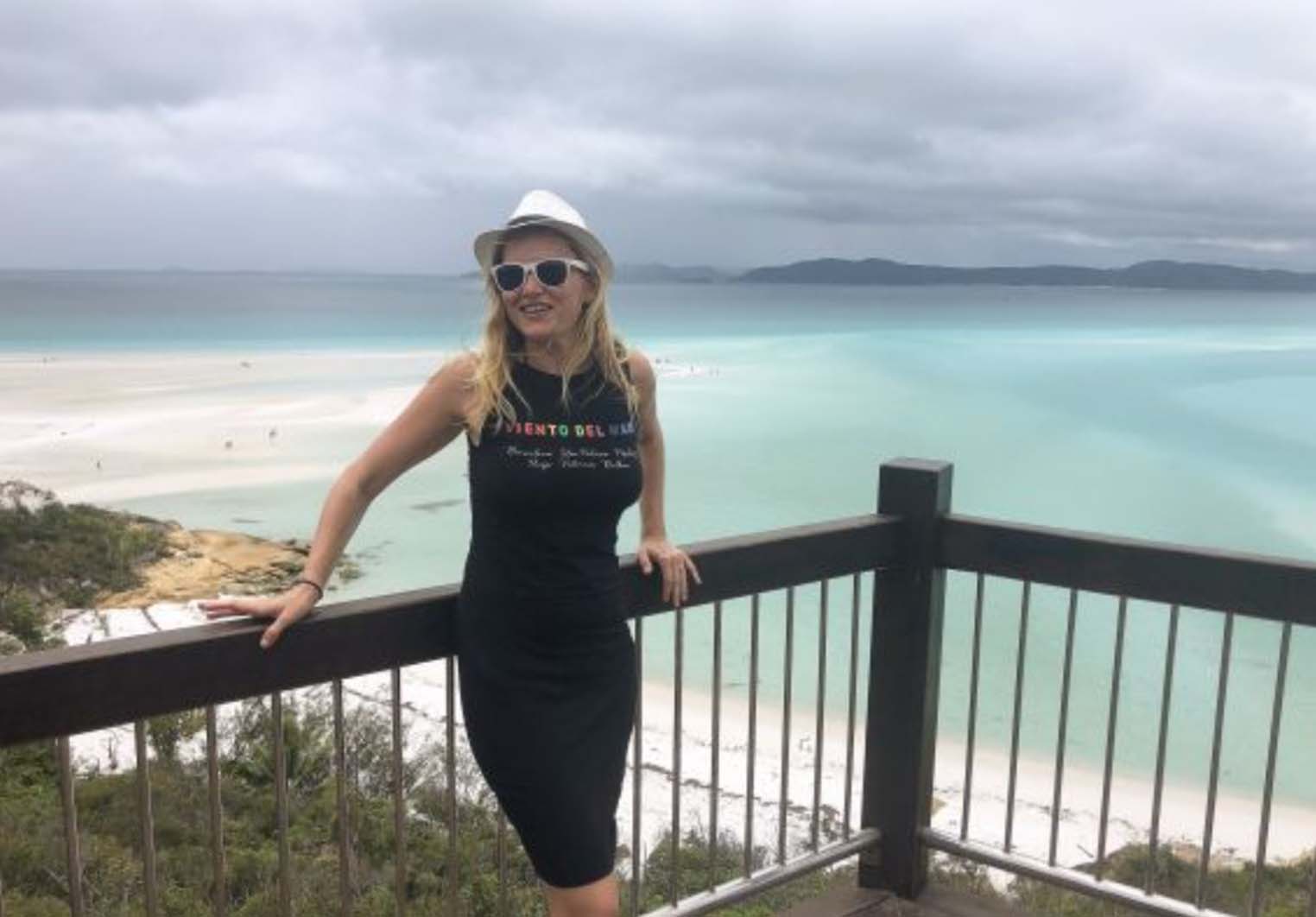Iceland, often referred to as the “Land of Fire and Ice,” is a country of striking contrasts. From its massive glaciers and volcanic landscapes to its stunning waterfalls and geothermal hot springs, Iceland offers some of the most unique and breathtaking natural wonders in the world.
The Golden Circle
The Golden Circle is a popular tourist route that covers three of Iceland’s most famous attractions: Þingvellir National Park, Geysir Geothermal Area, and Gullfoss Waterfall. This route is easily accessible from Reykjavik and is a great way to experience some of Iceland’s iconic natural wonders in a single day.
Þingvellir National Park
Location: About 40 km northeast of Reykjavik
Highlights:
- Historic Significance: Þingvellir is the site of Iceland’s first parliament, Alþingi, established in 930 AD, making it one of the oldest parliamentary institutions in the world.
- Geological Marvel: The park is situated in a rift valley between the North American and Eurasian tectonic plates. Visitors can see the visible rifts and fissures caused by the diverging plates.
- Silfra Fissure: One of the best diving and snorkeling spots in the world, Silfra offers crystal-clear waters with visibility up to 100 meters.
Experience:
Walking through Þingvellir feels like stepping into a different world. The landscape is a mix of lush green fields, rocky outcrops, and deep fissures. The sense of history and natural beauty makes it a must-visit destination.
Geysir Geothermal Area
Location: In the Haukadalur Valley, about 100 km from Reykjavik

Highlights:
- Strokkur Geyser: The main attraction here, Strokkur erupts every 5-10 minutes, shooting boiling water up to 20 meters in the air.
- Great Geysir: Although it erupts infrequently, the Great Geysir was the first geyser described in a printed source and the one for which all others are named.
Experience:
The anticipation builds as you wait for Strokkur to erupt, and when it does, the sight is nothing short of spectacular. The geothermal area is dotted with bubbling hot springs and fumaroles, providing a glimpse into the powerful geothermal forces at work beneath Iceland’s surface.
Gullfoss Waterfall
Location: About 120 km from Reykjavik, along the Hvítá river
Highlights:
- The Waterfall: Gullfoss, meaning “Golden Falls,” is a two-tiered waterfall that plunges into a deep canyon. The sheer power and volume of water are awe-inspiring.
- Scenic Beauty: On sunny days, a rainbow often forms in the mist created by the waterfall, adding to its magical beauty.
Experience:
Standing at the edge of Gullfoss and feeling the spray of the water on your face is an unforgettable experience. The roar of the falls and the sight of the water cascading down the rocks are truly mesmerizing.
The South Coast
The South Coast of Iceland is home to some of the country’s most dramatic landscapes and natural attractions. From black sand beaches to towering glaciers, this region is a treasure trove of natural wonders.
Seljalandsfoss Waterfall
Location: About 120 km southeast of Reykjavik
Highlights:
- Unique Perspective: One of the few waterfalls in the world where you can walk behind the cascading water, offering a unique and breathtaking perspective.
- Photography Opportunities: The setting sun creates beautiful lighting for photos, making it a favorite spot for photographers.
Experience:
Walking behind Seljalandsfoss is an exhilarating experience. The sound of the water crashing down and the cool mist in the air create a refreshing and immersive environment.
Skógafoss Waterfall
Location: About 150 km southeast of Reykjavik
Highlights:
- Impressive Drop: Skógafoss is one of Iceland’s largest waterfalls, with a drop of 60 meters and a width of 25 meters.
- Hiking Opportunities: A staircase alongside the waterfall leads to the top, offering stunning views of the surrounding landscape.
Experience:
The sheer power of Skógafoss is captivating. The waterfall produces a significant amount of spray, often resulting in rainbows on sunny days. The hike to the top provides a different perspective and is well worth the effort.
Reynisfjara Black Sand Beach
Location: Near the town of Vík í Mýrdal, about 180 km southeast of Reykjavik
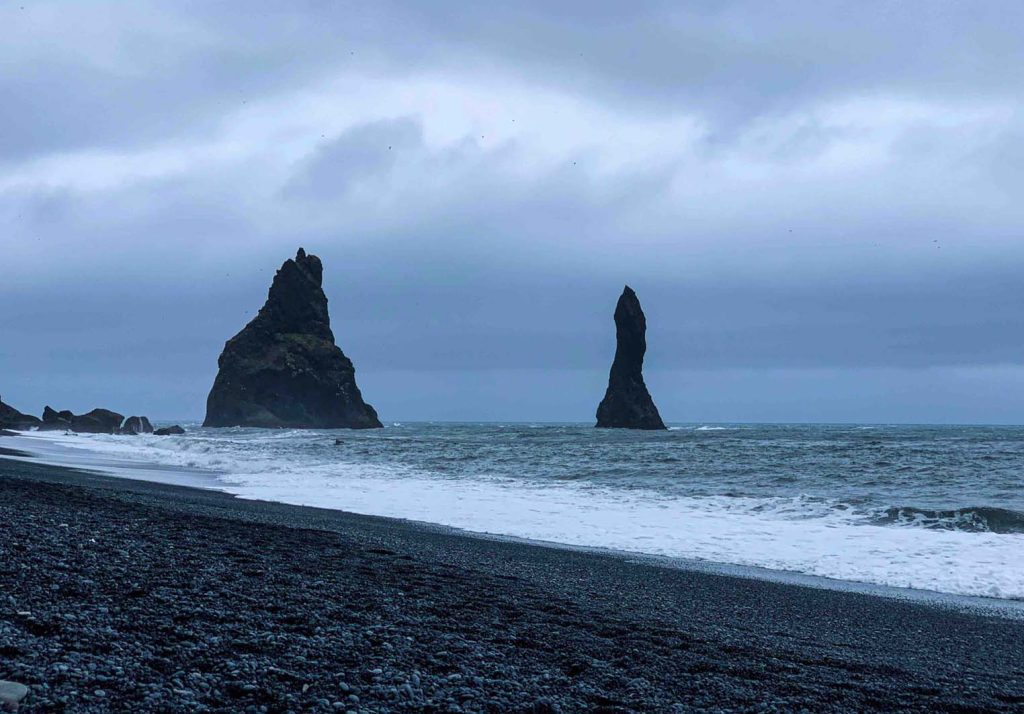
Highlights:
- Black Sand: The beach is famous for its black volcanic sand and striking basalt columns.
- Sea Stacks: The Reynisdrangar sea stacks rise dramatically from the ocean, creating a hauntingly beautiful scene.
Experience:
Reynisfjara is otherworldly. The contrast between the black sand and the white waves crashing against the shore is stunning. The basalt columns provide a unique backdrop, making it a photographer’s dream.
Jökulsárlón Glacier Lagoon
Location: About 380 km southeast of Reykjavik
Highlights:
- Floating Icebergs: The lagoon is filled with large icebergs that have broken off from the nearby Breiðamerkurjökull glacier.
- Wildlife: Seals can often be seen swimming among the icebergs, and birds such as Arctic terns are frequently spotted.
Experience:
Jökulsárlón is a place of serene beauty. The sight of massive icebergs drifting in the lagoon is both peaceful and awe-inspiring. Boat tours are available for a closer look, and the nearby Diamond Beach, where icebergs wash up on the shore, is equally captivating.
The North and East
The northern and eastern parts of Iceland offer a different but equally stunning array of natural attractions, including geothermal areas, majestic waterfalls, and serene fjords.
Mývatn Nature Baths
Location: Near Lake Mývatn, about 480 km northeast of Reykjavik
Highlights:
- Geothermal Pools: Often referred to as the Blue Lagoon of the North, Mývatn Nature Baths offer a relaxing soak in mineral-rich geothermal waters.
- Scenic Views: The baths are surrounded by volcanic landscapes, providing a tranquil setting.
Experience:
The warm, milky-blue waters of Mývatn Nature Baths are incredibly soothing. The natural setting, with steam rising against a backdrop of volcanic hills, adds to the sense of relaxation and rejuvenation.
Dettifoss Waterfall
Location: About 550 km northeast of Reykjavik, in Vatnajökull National Park
Highlights:
- Powerful Force: Dettifoss is considered the most powerful waterfall in Europe, with an average water flow of 193 cubic meters per second.
- Stunning Surroundings: The waterfall is set in a rugged canyon, creating a dramatic and powerful scene.
Experience:
The raw power of Dettifoss is truly humbling. The roar of the water and the sight of the massive cascade plunging into the canyon below is an unforgettable experience. Viewing platforms on both sides of the waterfall offer different perspectives.
Seyðisfjörður
Location: In the Eastfjords, about 670 km east of Reykjavik

Highlights:
- Charming Town: Seyðisfjörður is a picturesque town known for its colorful wooden houses and vibrant arts scene.
- Fjord Views: The town is located at the end of a long fjord, surrounded by mountains and waterfalls.
Experience:
Seyðisfjörður is like stepping into a storybook. The colorful houses and serene fjord create a peaceful and idyllic setting. The town is also a hub for artists, with numerous galleries and cultural events.
The Highlands
The Highlands of Iceland are a remote and rugged region, offering some of the country’s most pristine and untouched landscapes. Accessing the Highlands typically requires a 4×4 vehicle, but the journey is well worth it for those seeking adventure and solitude.
Landmannalaugar
Location: In the Fjallabak Nature Reserve, about 180 km east of Reykjavik
Highlights:
- Colorful Mountains: The rhyolite mountains display a stunning array of colors, from reds and pinks to greens and blues.
- Hot Springs: Natural hot springs offer a relaxing soak after a day of hiking.
Experience:
Landmannalaugar is a hiker’s paradise. The colorful mountains and geothermal activity create a surreal landscape. The Laugavegur Trail, one of the most famous hiking routes in Iceland, starts here and takes you through some of the country’s most breathtaking scenery.
Askja Caldera
Location: In the central Highlands, about 550 km northeast of Reykjavik
Highlights:
- Volcanic Crater: Askja is a large caldera formed by volcanic activity, featuring the stunning Víti crater lake.
- Remote Beauty: The stark, lunar-like landscape provides a sense of isolation and tranquility.
Experience:
Visiting Askja feels like traveling to another planet. The caldera and its turquoise lake are surrounded by desolate lava fields and volcanic formations. The drive to Askja is an adventure in itself, taking you through some of Iceland’s most remote and rugged terrain.
Practical Tips for Visiting Iceland’s Natural Wonders
- Weather: Iceland’s weather is unpredictable, so be prepared for all conditions. Dress in layers and bring waterproof clothing.
- Driving: Many of Iceland’s natural attractions are located in remote areas. Renting a 4×4 vehicle is recommended for accessing more rugged terrains, especially in the Highlands.
- Safety: Always follow safety guidelines, especially when visiting waterfalls and geothermal areas. The natural beauty can be dangerous if not approached with caution.
- Respect Nature: Iceland’s fragile environment requires respect and care. Stick to marked paths and avoid disturbing wildlife.
- Booking: Some attractions, such as the Blue Lagoon and certain tours, require advance booking. Plan ahead to secure your spots.
Iceland is a land of unparalleled natural beauty, with a diverse range of landscapes that offer something for every traveler. From the dramatic waterfalls and geothermal wonders of the Golden Circle to the serene fjords and rugged Highlands, Iceland’s natural wonders are truly must-see attractions. Whether you’re seeking adventure, relaxation, or simply a chance to connect with nature, Iceland promises an unforgettable experience.
